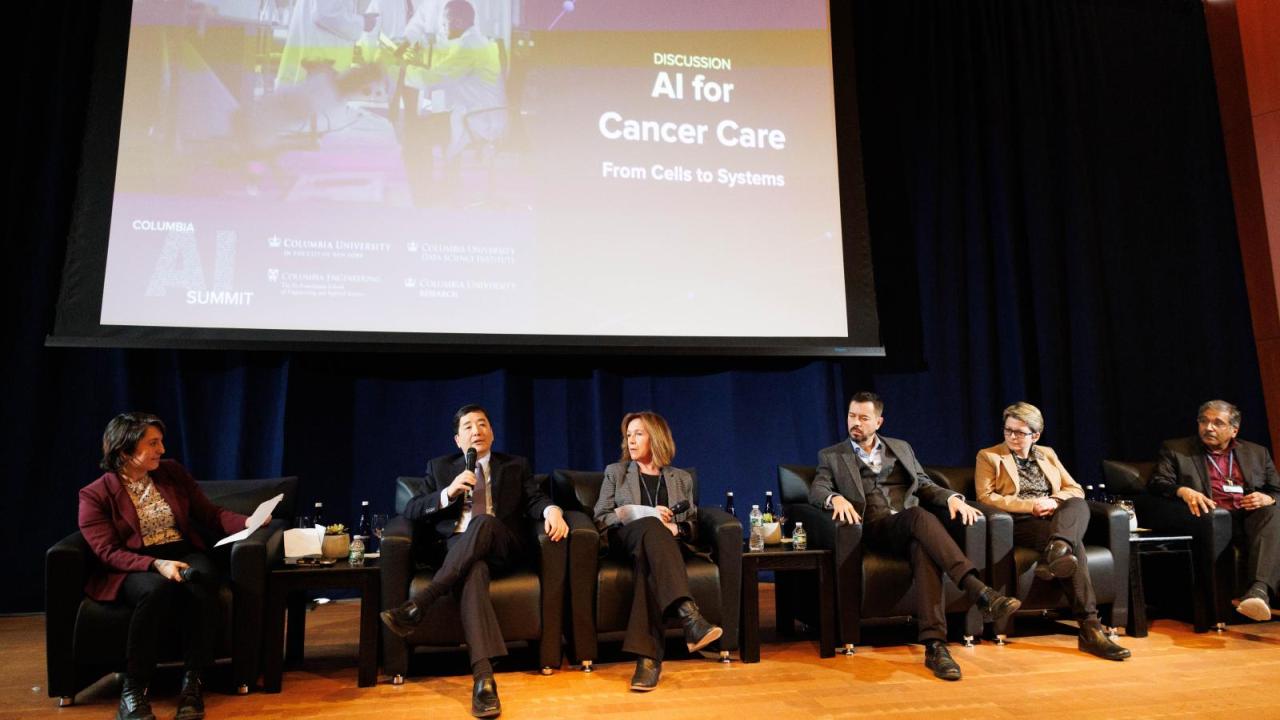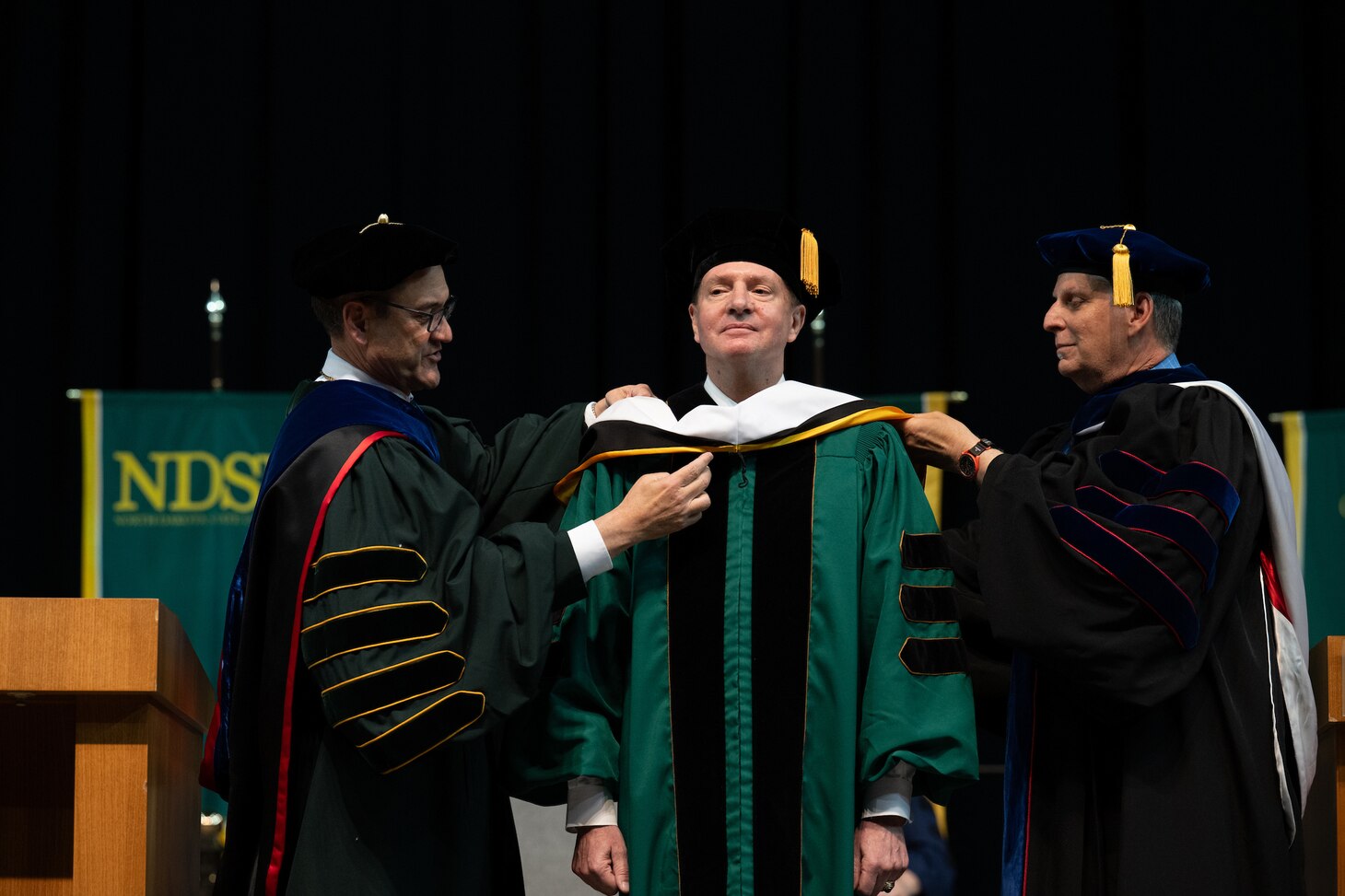2025 AI+Science Hackathon Challenges Students to Take on Cutting-Edge Scientific Problems with AI - DSI

The 2025 AI+Science Hackathon, organized by the Eric and Wendy Schmidt AI in Science Fellows with support from the Data Science Institute (DSI), concluded its two-week run in April. In the spirit of the AI+Science Research Initiative, the event invited students to apply the latest in machine learning to advance methods for scientific discovery.
Overall, the Hackathon drew engagement from across the Sciences, with 34 students from the Computer Science, Chemistry, and Astrophysics Departments presenting at the final event. Said Ludwig Schneider, a Schmidt AI in Science Fellow and a veteran judge and organizer of the event, “The Hackathon brings together perspectives from different fields and demonstrates potential ways AI can enhance discovery.”
Eight student teams took on one of two projects, either using AI to characterize new research materials, or using reinforcement learning for biological neuronal networks. Teams were provided with an initial training on the subject, a mentor from among the Schmidt AI in Science Fellows, and access to NVIDIA A100 GPUs to train their models. Following a two-week sprint, teams reconvened to make their cases before a panel of judges.
The first of the two projects sought to influence neuronal networks in real time through reinforcement learning (RL). Historically, researchers have used fixed stimulation patterns to study the learning and memory properties of biological neuronal networks (BNNs)—tiny, lab-grown networks of living neurons from the brain. But fixed patterns are limited in their capacity to keep up with changes in the network over time, such as neuron growth.

To this end, students were tasked with developing RL agents capable of electrically stimulating neuronal cultures to train them in real time. Students shared the approaches they undertook to balance exploitation of existing knowledge with exploration of new possibilities.
Graduate students Qianyi He (MSDS ’26) and Zhuyiheng Chu (MCAM ’26) explored a few possibilities before settling on a novel strategy involving transformers, which ultimately won with the highest observed performance of the day.
Stephan Ihle, a Schmidt AI in Science Fellow as well as an organizer and judge of the event, conducts research in the space and pitched the project for the Hackathon after seeing its resonance with students in the past. “Not only does the Hackathon offer students from diverse backgrounds a fun opportunity to try something new,” he said, “but it also helps us see how they’re thinking: different students look at things in different ways, and that’s exactly what we saw today.” Pointing to the winning approach, he added, “Using transformers in hindsight feels obvious, but I would never have thought of this myself.”

The second project challenged students to identify new research materials using AI. Across the sciences, X-rays are frequently used to characterize new research materials. Although the information to identify many materials by x-ray (core-electron binding energy, or CEBE) has been known since the 1980s, conventional computation of CEBE through quantum mechanics is complex and costly. Graph-neural networks (GNNs) offer the potential to accomplish this faster and at lower costs. The project was proposed by Schmidt AI in Science Fellow and Hackathon organizer Adam Fouda, whose research is closely-related.
Challenged to develop GNN models to predict CEBE from molecular structure, student teams drew on their respective training to formulate their approaches. The winning group included Bhavnesh Jangid, Valay Agarawal, and Jacob Wardzala, PhD candidates in the Chemistry Department and Joshua Zhou, a PhD candidate in the Molecular Engineering Department. “We had a great time during the hackathon,” said Joshua. “It’s not often you get to learn something new in the context of a well-defined problem, and the DSI and the AI+Science Research Initiative provided all the support and guidance we needed.”

Schneider, who completes his fellowship this spring, was inspired to organize the event for a second year in a row because, having participated in hackathons in the past, he finds them uniquely re-energizing: “In research, sometimes you’re so focused on one topic that you can miss the low-hanging fruit next to it. The hackathon forces you out of that bubble.” He added, “It feels really good to learn something quickly. Especially when you’re hearing about AI and machine learning every day, something like the Hackathon forces you to take on one aspect yourself and build something with it.”

As Schneider put it, the goal of the Hackathon is to welcome students, whatever their background or skills, to dip their toe into the rapidly evolving world of AI, to create something with real-world applications, and to have some fun. In this case, the 2025 Hackathon was a success. Zhuyiheng Chu (MCAM ’26), a member of the winning RL team, said, “Designing a model to solve a real-world problem was both challenging and exciting—it pushed us to think creatively and rigorously under time constraints.
Qianyi He (MSDS ’26), also from the winning RL team, said, “It was a great opportunity to explore real-time interaction between AI and living neurons with support from the DSI and the AI+Science Research Initiative. By restructuring raw spiking data into a compact and meaningful state, our RL agent adapted more efficiently — highlighting that thoughtful data representation can outweigh model complexity.”
Thank you to all participants for their engagement, and congratulations to the winning teams. We look forward to seeing what you discover next year!











